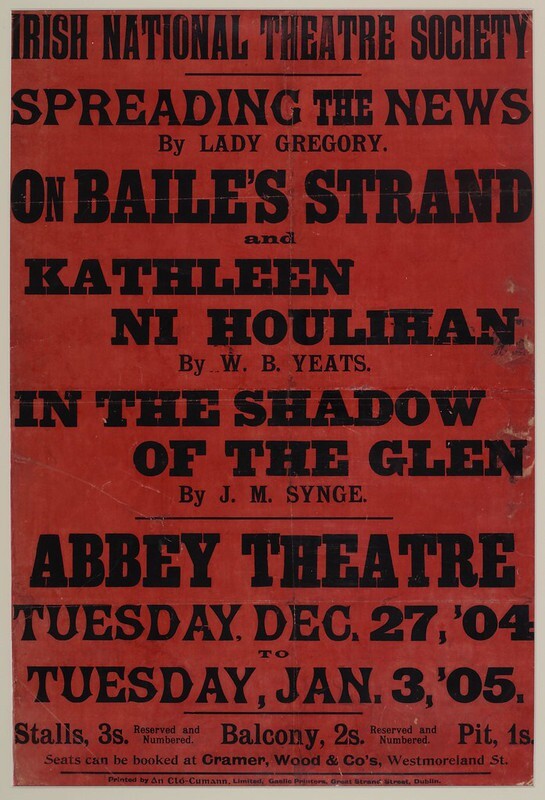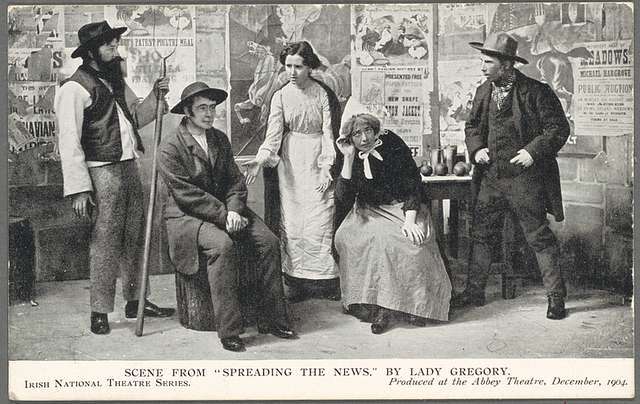Founded in 1904 by William Butler Yeats and Lady Augusta Gregory, the Abbey Theatre in Dublin was a key part of the Irish cultural nationalist movement that emerged during the late 19th and early 20th centuries. Yeats, Lady Gregory, and their associates intended the theatre to cultivate a distinctly Irish style of drama that reflected Irish experiences and cultural traditions. Some of the plays produced at the Abbey Theatre were overtly political and advocated for Irish independence, but many of them approached opposition to the British establishment in a more subtle way by simply celebrating Irish culture and identity. Today, the Abbey Theatre serves as the national theatre of the Republic of Ireland and continues its tradition of producing great Irish drama. The publicity items pictured below reflect the Abbey Theatre’s attempts to create a distinctly Irish style of drama during the early 1900s.

